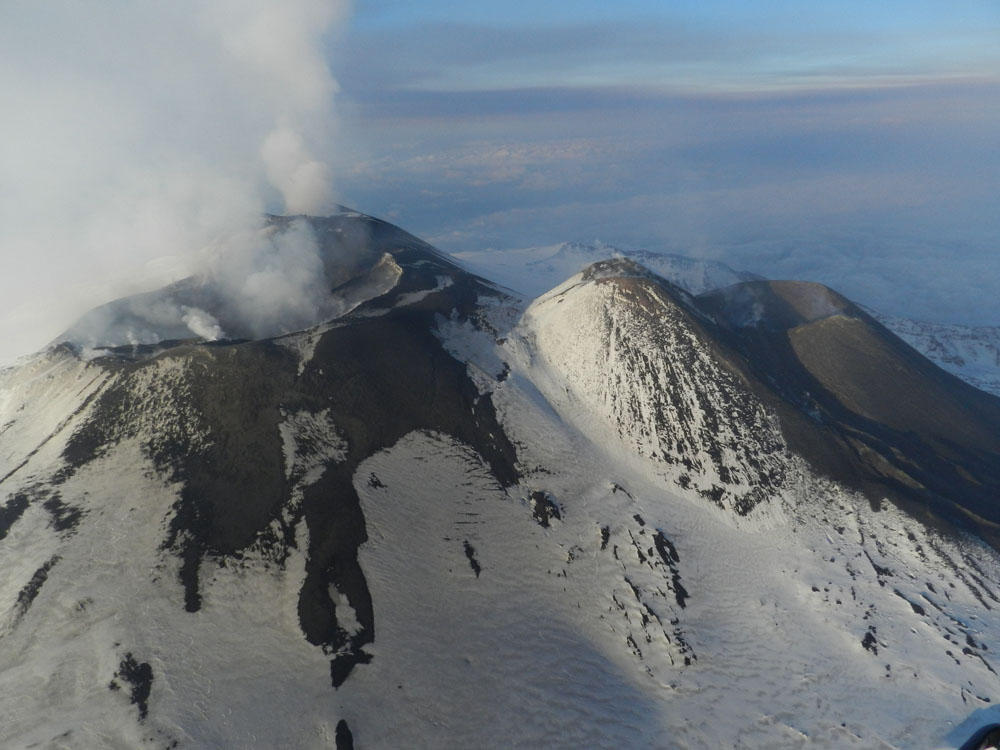
Etna bulk degassing (Sicily, Italy)

Aerial view of the summit craters of Etna on 4 March 2013, looking northeast. The former Central Crater, now occupied by the Bocca Nuova and the Voragine, is in the left part of the image, and further in the background is the Northeast Crater, currently the highest point on Etna (3329.6 m). The two cones of the Southeast Crater are to the right; the older and taller cone formed between the mid-1980s and 2007, whereas the new, dark and still lower cone at right has grown since the spring of 2011. Since this photo was taken, the new cone has grown significantly, nearly reaching the elevation of the old Southeast Crater cone by mid-November 2013 (Image credits: Boris Behncke).
| Volcano: | Etna (see Etna at the Smithsonian Institution website in a new tab) |
|---|---|
| Type: | Volcanic Plume |
| Description: | Total bulk degassing from the activity of all the four craters present on the top of the Mt Etna volcano. |
Point of contact for this site:
Alessandro Aiuppa, alessandro.aiuppa@unipa.it (DiSTeM, University of Palermo)
Giuseppe Salerno, giuseppe.salerno@ct.ingv.it (INGV, Catania)
Giancarlo Tamburello, giancarlotamburello@gmail.com (DiSTeM, University of Palermo)
Bibliographic references for this site
Aiuppa, A., Giudice, G., Gurrieri, S., Liuzzo, M., Burton, M., Caltabiano, T., McGonigle, A.J.S., Salerno, G., Shinohara, H., Valenza, M, 2008,Total volatile flux from Mount Etna, Geophisical Research Letters, vol.35, n.L24302, pp. 1-5, DOI: 10.1029/2008GL035871
Allard, P., Carbonnelle, J., Dajlevic, D., Le Bronec, J., Morel, P., Robe, M.C., Maurenas, J.M., Faivre-Pierret, R., Martin, D., Sabroux, J.C., Zettwoog, P. , 1991,Eruptive and difuse emissions of CO2 from Mount Etna, Nature, vol.351, n.n.d., pp. 387-391, DOI: 10.1038/351387a0




